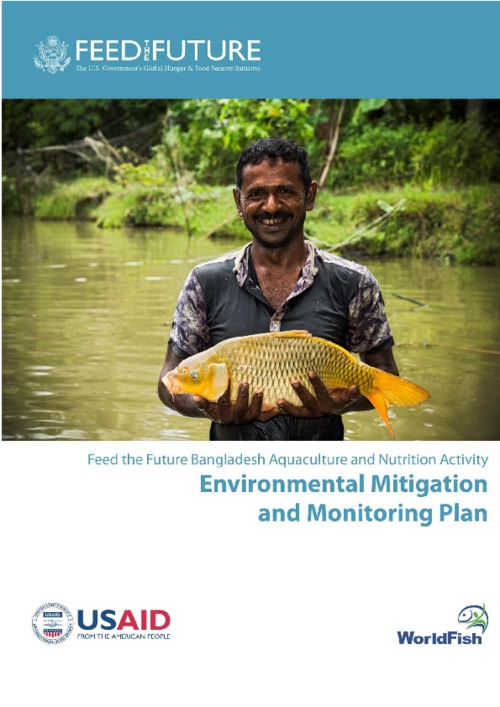Feed the Future Bangladesh Aquaculture and Nutrition Activity: Environmental mitigation and monitoring plan

Citation
MHM Mostafa Rahman. (2018). Feed the Future Bangladesh Aquaculture and Nutrition Activity: Environmental mitigation and monitoring plan. Dhaka, Bangladesh: WorldFish. Report.
The five-year assistance activity, Feed the Future Bangladesh Aquaculture and Nutrition Activity, was awarded by the USAID to the Grantee, International Center for Living Aquatic Resources Management (ICLARM), doing business as WorldFish, on 6 February 2018, and is expected to continue until 5 February 2023 with US $24.5 million funding. The Activity was built to keep the momentum generated by the Feed the Future Aquaculture for Income and Nutrition Activity (AIN), and to achieve inclusive aquaculture sector growth through a market system approach. The Activity will contribute to Development Objective 2, Availability, Access, and Utilization of Domestically Produced and Nutritious Foods Increased, of USAID’s Country Development and Cooperation Strategy. This Environmental Mitigation and Monitoring Plan (EMMP) is based on the environmental determinations specified in the Initial Environmental Examination (IEE) approved by USAID (Asia 17-078, dated August 9, 2017), and to fulfill those recommendations and requirements as mentioned. In order to ensure that the Activity has minimal negative impacts on the environment, the Project Description was critically analyzed to illustrate and visualize the anticipated interventions. Then, the potential impacts of each of the anticipated interventions were judged against the environmental guidelines, approvals, and documentation required by the United States Government (USG) and the Government of Bangladesh (GOB). The EMMP was developed based on the review of relevant documents, interviews, site visits, and practical work experience and professional judgment. The EMMP identified a set of generic potential environmental threats that would take place as a result of the anticipated interventions below: a) Bio-safety might be disrupted if invasive alien fish species are introduced; b) Food-safety might be disrupted if harmful inputs (i.e. chemicals, pharmaceutical products) are used by the fish feed millers, hatchery operators, growers, and/or the actors in the fish value chain; c) Aquaculture might be extended in an environmentally sensitive area or in protected areas; d) As an indirect result of the anticipated interventions, use of substances like chemical fertilizers, pesticides, pharmaceutical products, etc. may increase, which can cause substantial pollution or long-term impact on wildlife populations. In order to mitigate the potential impacts, the EMMP recommended measures to avoid/minimize the consequences for each of the respective anticipated interventions. The EMMP also developed a monitoring system to oversee if the mitigation procedures are appropriate and effective. Finally, the Grantee and the sub-Grantees will be responsible to ensure sound execution of the EMMP.
Permalink
Date Available
Type
Countries
Copyright
CC-BY-4.0
Research Themes
Language